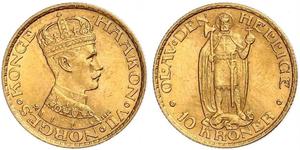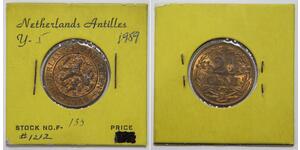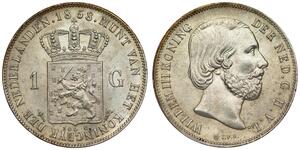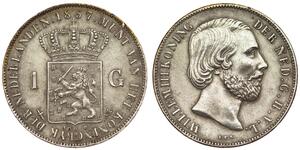10 Krone (售价 $13.0)
1967, Denmark, Frederick IX. Silver 10 Kroner Coin. Princess Margrethe Wedding!
Mint Year: 1967
Reference: KM-856.
Mint Place: Copenhagen (heart)
Condition: Light PVC residue, otherwise a nice AU++
Denomination: 10 Kroner - Wedding of Princess Margrethe
Material: Silver (.800)
Weight: 20.52gm
Diameter: 36mm
Obverse: Head of Frederick IX of Denmark right.
Legend: FREDERIK IX KONGE AF DANMARK C (privy mark: heart) S
Reverse: Conjoined busts of Princess Margrethe and Henri de Laborde de Monpezat right.
Legend: PRINSESSE MARGRETHE . PRINS HENRIK . 10 IJUNI 1967 . 10 KRONER .
Margrethe II (full name: Margrethe Alexandrine Þórhildur Ingrid; born 16 April 1940) is the queen regnant of Denmark. As the eldest child of King Frederik IX and Ingrid of Sweden, she succeeded her father upon his death on 14 January 1972. On her accession, she became the first female monarch of Denmark since Margrethe I, ruler of the Scandinavian countries in 1375–1412 during the Kalmar Union.
Margrethe was born in 1940, but did not become heiress presumptive until 1953, when a constitutional amendment allowed women to inherit the throne (after it became clear that King Frederick was unlikely to have any male issue). In 1967, she married Henri de Laborde de Monpezat, with whom she has two sons: Crown Prince Frederik (born 1968) and Prince Joachim (born 1969).
em>.
Frederick IX (Christian Frederik Franz Michael Carl Valdemar Georg) (11 March 1899 – 14 January 1972) was King of Denmark from 20 April 1947 until his death. He was the son of King Christian X of Denmark and Queen Alexandrine, born Duchess of Mecklenburg.
Frederik was born in Sorgenfri on Zealand and was educated at the Royal Danish Naval Academy (breaking Danish royal tradition by choosing a naval instead of an army career) and the University of Copenhagen. Before he became king, he had acquired the rank of Rear Admiral and he had had several senior commands on active service. In addition, with his great love of music, the king was an able piano player and conductor.
In 1922, Frederick was engaged to Princess Olga of Greece and Denmark, his cousin and the daughter of Prince Nicholas of Greece and Denmark; however they never wed. Instead, he married Princess Ingrid of Sweden (1910–2000), daughter of Crown Prince Gustaf Adolf, later King Gustaf VI Adolf of Sweden, in Stockholm on 24 May 1935. They were related in several ways. In descent from Oscar I of Sweden, they were third cousins. In descent from Paul I of Russia, Frederick was a fourth cousin of Ingrid's mother. They had three daughters:
- Princess Margrethe Alexandrine Þórhildur Ingrid (born 1940), later Queen Margrethe II of Denmark, who married French Count Henri de Laborde de Monpezat, who was created Prince Henrik of Denmark, in 1967.
- Princess Benedikte Astrid Ingeborg Ingrid (born 1944), who married Prince Richard of Sayn-Wittgenstein-Berleburg in 1968.
- Princess Anne-Marie Dagmar Ingrid (born 1946), who married King Constantine II of the Hellenes in 1964.
When he had no sons, it was expected that his younger brother Knud would inherit the throne, in accordance with Denmark's succession law (Royal Ordinance of 1853). However, in 1953, an Act of Succession was passed, changing the method of succession to cognatic primogeniture, meaning that his eldest daughter, Margrethe, could succeed if he had no sons, which she did, as Queen Margrethe II. By order of 27 March 1953 the succession to the throne was limited to the issue of King Christian X.
Frederick's reign saw great change. During these years, Danish society shook off the restrictions of an agricultural society and developed a welfare state. And, as a consequence of the booming economy of the 1960s, women entered the labour market. In other words, Denmark became a modern country, which meant new demands on the monarchy.
He was the 912th Knight of the Order of the Garter in 1951.
Shortly after the king had delivered his New Year's Address to the Nation at the 1971/72 turn of the year, he fell ill. On his passing in Copenhagen in 1972, King Frederick IX was buried outside Roskilde Cathedral near Copenhagen. Previous rulers had been interred in the cathedral, but it was the King's wish to be buried outside.

|
发布人:
anonymous 2016-11-09 |
|
||
|
||
|
||
|
||
|
||
2 1/2 Cent 荷兰
本组有 18 钱币 / 14 售价
⇑
1 Gulden 荷兰王国 銀
本组有 5 钱币 / 5 售价
⇑

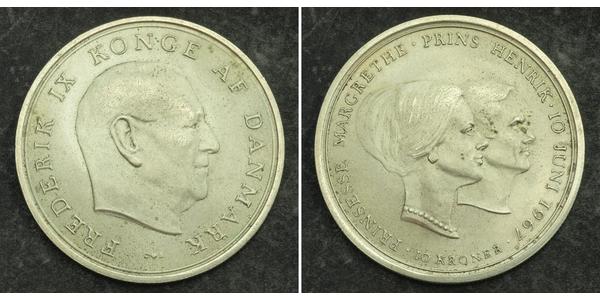


 Deutsch
Deutsch Русский
Русский Українська
Українська English
English Italiano
Italiano Français
Français Español
Español 汉语
汉语


